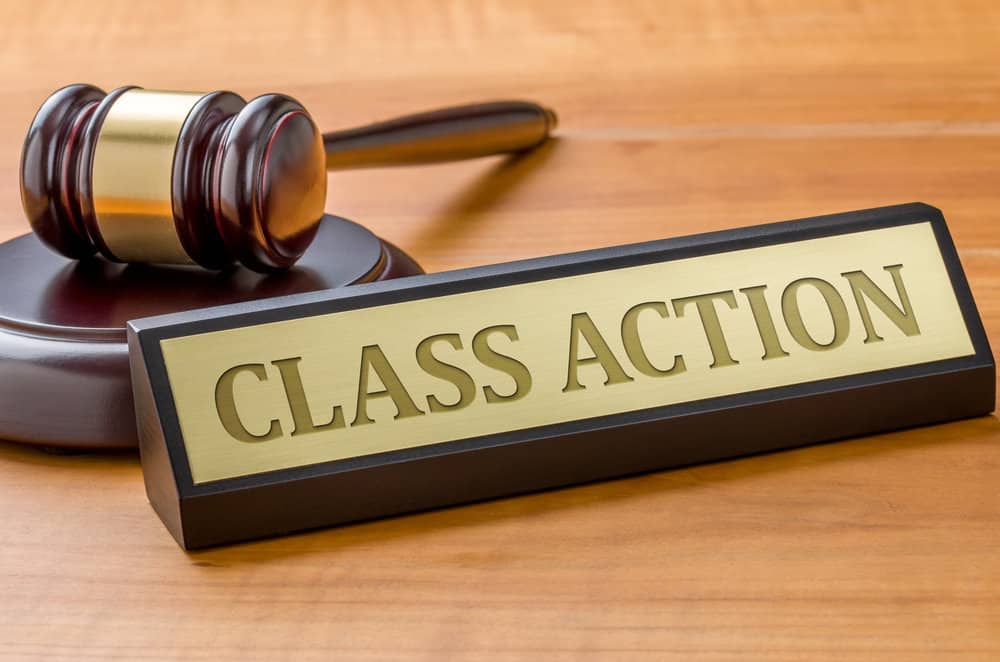Class action lawsuits allow many people with similar grievances to join together and file a legal case against a common defendant, usually a corporation or large institution. This legal procedure provides an efficient and cost-effective way for a group of individuals, also known as the “class,” to pursue their claims collectively, often led by one or more lead plaintiffs. Consolidating claims can help bring justice to a larger group of victims harmed by the same defendant due to negligence, deceptive business practices, or other improper conduct.
Individuals involved in a class action lawsuit typically share common legal issues, including product liability, defective products, financial losses, or health hazards. By banding together, the class members can strengthen their collective voice and increase their chances of achieving a favorable outcome. Although participating in a class action lawsuit may result in smaller individual recovery amounts, it helps ensure that each member of the group can share in the total compensation awarded.
Several resources exist to help potential class members stay informed about open and current cases. These tools give victims the knowledge and access necessary to fight back and seek justice from negligent or deceptive companies.
What Is a Class Action Lawsuit?
A class action lawsuit is a legal proceeding in which one person or a small group represents a larger group of individuals who have all suffered the same injury or harm. The injuries can be physical or financial and may result from defective products, discriminatory practices, environmental hazards, or false advertising, among other causes.
In a class action, the plaintiffs, or those bringing the suit, must all have been impacted similarly by the defendant’s actions. This type of lawsuit allows for consolidating many individual claims into a single, more efficient legal action. The primary benefit of a class action is that it increases access to justice for those who may not have the resources to bring a case independently or whose individual claims might be too small to justify the cost of litigation.
There are a few main components that characterize a class action lawsuit:
- A large group of plaintiffs, known as the “class,” who have similar or identical claims
- A representative plaintiff, or lead plaintiff, who acts on behalf of the class
- A defendant, which is typically a corporation or other large entity accused of causing harm to the class
- A common set of facts or legal issues that apply to all members of the class
Class action lawsuits involve various legal areas, including consumer protection, securities fraud, employment law, and product liability. The goal is to obtain compensation for the class members and to hold the defendant accountable for their actions. In some cases, a successful class action lawsuit can also lead to changes in corporate practices or industry regulations to prevent similar issues from arising.
Types of Class Action Lawsuits
Class action lawsuits can be filed for various reasons and fall under different categories. This section will outline four types of class action lawsuits: Consumer Class Actions, Securities Class Actions, Employment Class Actions, and Environmental Class Actions.
Consumer Class Actions
Consumer class actions are lawsuits filed on behalf of a group of consumers who have suffered from a company’s harmful or deceptive practices. These lawsuits typically involve issues related to false advertising, defective products, or harmful side effects caused by products. A successful consumer class action can lead to compensation for the affected consumers and changes in the company’s practices to protect future consumers.
Securities Class Actions
Securities class actions involve lawsuits filed on behalf of investors who have suffered financial losses due to a company’s fraudulent or misleading actions. This can include insider trading, misrepresenting financial statements, or other violations of securities laws. These class actions can result in financial compensation for the affected investors and possible changes to the company’s management or compliance practices.
Employment Class Actions
Employment class actions focus on addressing issues related to violations of labor laws and employee rights. These lawsuits can arise when employers engage in wage theft, discrimination, harassment, or other unlawful workplace practices. An employment class action can benefit the affected employees by securing financial compensation, reinstatement, policy changes to ensure fair treatment and other remedies.
Environmental Class Actions
Environmental class actions are lawsuits filed on behalf of individuals or communities who have suffered due to environmental harms caused by a company or organization. Such lawsuits may involve air, water, or soil contamination, exposure to toxic chemicals, or other damages to natural resources or human health. A successful environmental class action can lead to compensation for those affected, changes in the offending company’s practices, and possible cleanup or remediation efforts.
Process and Procedures

Filing a Class Action
When considering a class action lawsuit, the first step usually involves determining whether a class action can be filed. An attorney evaluates the facts of the situation to decide if the case has merit. If the attorney believes a lawsuit can be filed, they will draft a class action complaint, which describes the events that caused the injury or financial harm suffered by the plaintiffs.
Certification of the Class
Before a class action lawsuit can proceed, the proposed class must be certified. This process typically involves meeting specific requirements, such as having a sufficient number of plaintiffs with similar legal claims and a representative plaintiff who adequately represents the class. Once the class is certified, the lawsuit can move forward on behalf of all class members.
Benefits and Drawbacks
Class action lawsuits offer several benefits to plaintiffs, including:
- Efficiency in addressing common issues among class members
- Greater access to justice for individuals with small claims
- Potential for significant monetary recoveries
However, there are also drawbacks to class action lawsuits, such as:
- Individual plaintiffs may have limited control over the lawsuit
- Potential for a lower recovery amount per plaintiff compared to individual lawsuits
- Lengthy litigation process
Notable Class Action Cases
Class action lawsuits can have a significant impact on both the plaintiffs and the defendants. These cases often involve large corporations being held accountable for their actions or negligence. Here are a few notable examples from recent history:
- Tobacco Settlements – The most significant class action settlement in history, totaling $206 billion, resulted from lawsuits filed against the major tobacco companies. These cases were primarily due to the companies’ concealment of the adverse health effects of smoking and their marketing tactics aimed at younger audiences.
- BP Gulf of Mexico Oil Spill – In 2010, the Deepwater Horizon oil spill in the Gulf of Mexico led to a $20 billion settlement. BP, the multinational oil company responsible for the spill, agreed to compensate the affected individuals, businesses, and governments for the environmental and economic damage caused by the disaster.
- Volkswagen Emissions Scandal – In 2015, Volkswagen admitted to installing software in their diesel vehicles that cheated on emissions tests, resulting in a $14.7 billion settlement. The settlement funds were used to compensate affected car owners, fund environmental projects, and promote zero-emissions vehicle technology.
- Enron Securities Fraud – The collapse of Enron, once one of the world’s leading energy companies, led to a $7.2 billion settlement in 2006. Investors who suffered losses due to the company’s fraudulent accounting practices were compensated for this massive settlement.
- American Home Products Fen-Phen Diet Drug – In 2000, a $3.75 billion settlement was reached in a class action lawsuit against American Home Products, the makers of the fen-phen diet drug combination. The drugs were linked to potentially fatal heart valve damage, resulting in one of the largest pharmaceutical settlements in history.
These cases demonstrate the power of class action lawsuits in holding corporations accountable for their actions and providing justice to the affected individuals and communities.
Settlements and Compensation
Class action lawsuits are a legal tool for holding companies accountable for misleading or deceiving their customers. These lawsuits often result in settlements and compensation for the affected parties. In this section, we will discuss the process of settlements and how compensation is distributed among class members.
When a class action lawsuit settles, the attorneys handling the case typically collect a percentage of the settlement or receive a fee award separate from the settlement amount. This ensures the legal team is compensated for their work while the remaining funds are allocated to the class members.
The specifics of each settlement can vary, but in general terms, the settlement amount is divided among the class members based on the severity of their claims and the total number of claimants. To receive compensation, class members must usually submit a claim form, providing information about their damages and, in some cases, supporting documentation.
It is essential to note that compensation from class action settlements is not guaranteed. Factors such as the available funds, the number of claimants, and the nature of the claims can impact the distribution of compensation among class members.
Sometimes, compensation may come as non-monetary benefits, such as product replacements or extended warranties. Additionally, certain types of settlements, such as those resulting from personal injury lawsuits, may have tax implications (Tax Implications of Settlements and Judgments – IRS). As a result, class members should consult with a tax professional to understand the tax implications of their particular settlement.
The Future of Class Action Lawsuits
As the legal landscape evolves, the future of class action lawsuits is expected to adapt to technological changes, consumer behavior, and global trends. One factor driving the future of class actions is the growing impact of data breaches and privacy concerns. Companies may face increased liability for handling consumer data, resulting in large-scale legal action when a breach or violation occurs.
Another trend in class action lawsuits includes environmental litigation. Businesses that contribute to widespread pollution or ecological damage may be held accountable by affected parties. For instance, people suffering health problems due to poor air quality or other environmental factors might join a class action lawsuit against responsible corporations.
Product liability and defective products also remain a significant focus in class action lawsuits. As new technologies emerge, companies need to ensure the safety and effectiveness of their products to avoid being the target of class actions by consumers who feel they have been harmed or misled.
Furthermore, workplace discrimination and wage and hour disputes remain relevant for class action lawsuits. As society strives for greater fairness in the workplace, employees may join forces to address unfair practices and seek compensation for lost wages and other damages.
Another consideration for the future of class action lawsuits is the global nature of business. As companies expand internationally, the potential for cross-border class action lawsuits increases. These cases bring unique challenges, such as addressing different legal systems and cultural expectations. Courts and legal professionals will need to adapt to these complexities to handle future class action litigation effectively.
Frequently Asked Questions
A common question is whether class action lawsuits are civil lawsuits. Yes, class actions are a type of civil lawsuit involving a legal dispute between two or more parties, as opposed to criminal actions filed by government prosecutors against those allegedly violating criminal law.
Various types of class action lawsuits exist, such as consumer protection, employment, securities, and product liability/personal injury class actions. The plaintiffs in a class action must have suffered similar issues due to the defendant’s conduct.
Another topic of interest is how to start a class action lawsuit. The process typically begins with the plaintiffs consulting a lawyer experienced in class action litigation. The lawyer will assess the case, determine the feasibility of a class action, and file the suit on behalf of the plaintiffs.
Lastly, claiming a portion of a class action settlement if you are not a legitimate class member is illegal, which may result in other affected parties receiving less than they should.



